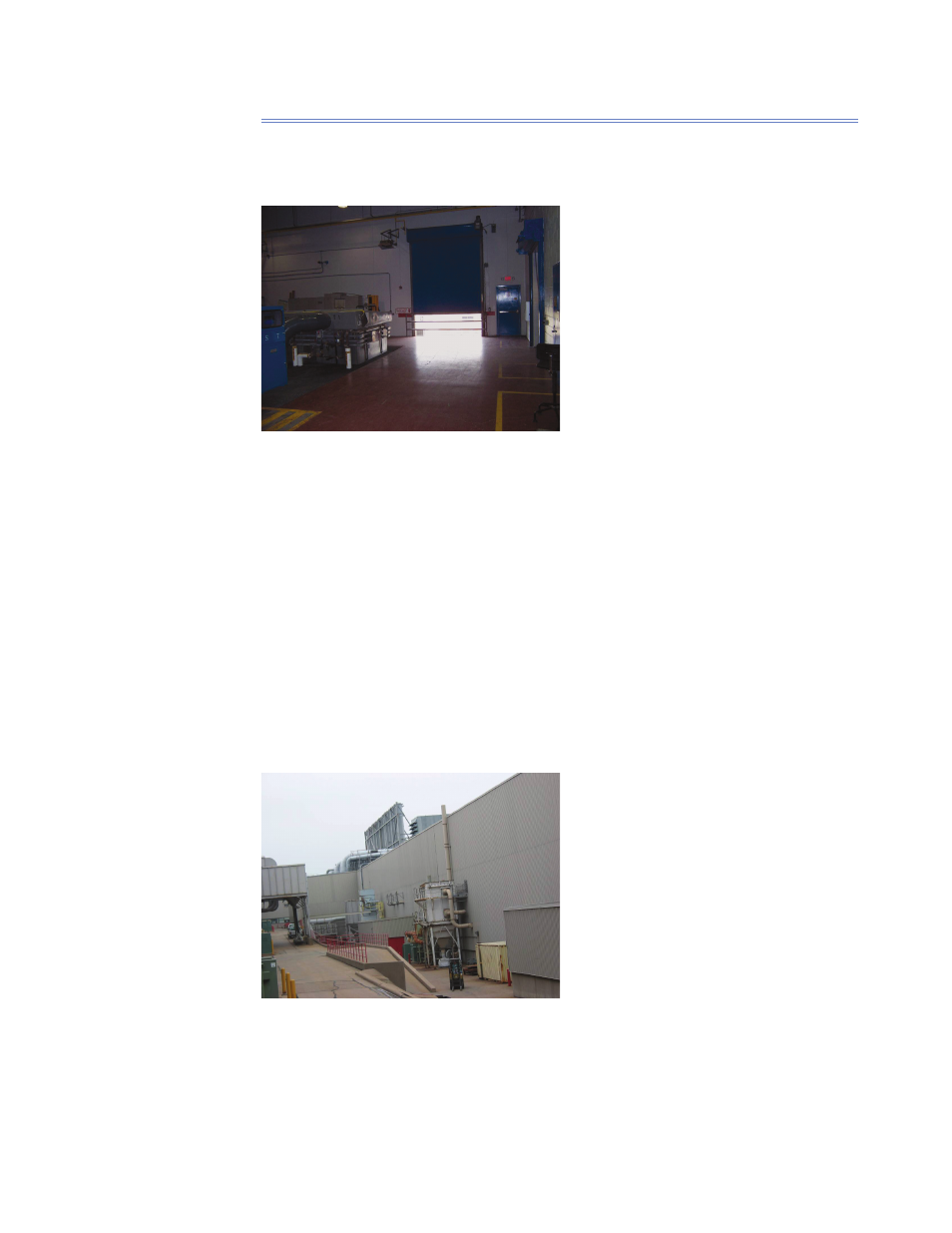Retrotec USACE User Manual
Page 240

D110 ENERGY & PROCESS ASSESSMENT PROTOCOL
D.7.2 Plating
D.7.2.1 Air Movement Greater Than 100 fpm Near Exhaust Hoods
(Ineffi ciency)
Figure D172. Plating shop with open door
causing excessive air movement near plating
tank exhaust hoods.
Exhaust hoods are installed on a plating tank to remove airborne contaminants
generated by the plating operation. These hoods have a design air infl ow to
capture and remove these contaminants. The air fl ow must overcome any room
air currents to capture these contaminants. If there is a high degree of room
air currents, the amount of exhaust air must be increased to overcome them,
which results in a waste of energy (Figure D172). These room air currents
can be caused by a supply air distribution system with high-velocity discharge
outlets near the plating tanks, by air entering the plating shop through open
doors, or by the use of pedestal fans in the area. When an excessive exhaust air
is required, extra energy is required to power the exhaust and makeup air fans,
and more heat is needed to temper the supply air in winter.
D.7.2.2 Operating Exhaust Systems When No Plating Operations
Are Occurring and Other Times When Not Required (Waste)
Figure D173. Plating shop with numerous
exhaust systems, some that operate
continuously.
A plating shop has many exhaust systems that remove hazardous gases and par-
ticulate from the workspace. It is common for all exhaust systems to run con-
tinuously whenever the plating shop is operating, even though not all plating
